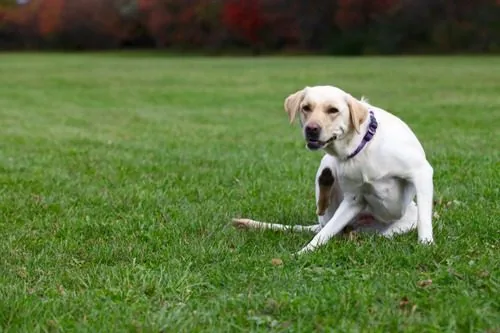Cherry Eye in Dogs: What Is It and Can It Be Treated?
Have you ever heard of cherry eye in dogs? Have you ever had a dog with this condition, or do you think your dog may have it right now? Cherry eye is more common in dogs than you may realize, and there’s a chance you may encounter it with your own pet at some point during his life, too.

In this article below, you’ll find out more information about this condition as well as what you can do to help your dog. You can use this knowledge to understand when it’s time to go to the veterinarian and what to do for your pet at home as well. Learn more by reading on.
Defining Cherry Eye in Dogs
Cherry eye is actually a common name for a condition that is really called prolapsed nictitating membrane. This condition causes the membrane in a dog’s eye to become inflamed and enlarged, which can also cause it to prolapse. A normal membrane should be difficult to see in a dog’s eye, but a prolapsed one is very visible. This problem is a common one in many dogs.
Symptoms of Dog Cherry Eye
Common symptoms of cherry eye in dogs include:
Swelling of the Eye
The eye may begin to swell as soon as this condition begins. This is because the prolapsed membrane is causing blockages in the eye and leading to further issues.
Red or Pink Color in the Whites of the Eye
Over time, the swelling in the eye will turn into a red or pink bulge that is positioned more toward the inside of the eye. You should be able to see it very clearly at this point, as it will be red, large, and swollen.
Rubbing the Eye
Your dog will rub at his eye often if he has cherry eye because this condition can be painful and irritating. The prolapsed membrane itself doesn’t really cause that much irritation, but it can lead to other issues such as a scratched cornea or inflammation throughout the eye, which contribute to the pain instead.
Inability to Close the Eye
When the swelling occurs, your dog will likely not be able to close his eye fully.
Discharge from the Eye
The longer your dog is unable to close his eye, the more likely it will be to develop discharge. The discharge may be clear or could be one of several other colors depending on the severity.
Causes of Cherry Eye in Dogs
Cherry eye can be caused by a number of different things in dogs, including:
Weakening of Ligaments in the Eye
Cherry eye is caused by a weakening of the ligaments in the eye that hold the nictitating membrane in place. This weakening can occur naturally or it may occur as a result of an injury or some type of trauma to the eye.
Eye Injuries
Although an eye injury can lead to cherry eye in dogs, this is not the most common cause. In fact, it is much more common for dogs to naturally develop this condition as they get older.
Common Condition for Puppies and Young Dogs
Cherry eye is much more common in puppies and very young dogs than it is in older dogs, except where injury or trauma is present. Dogs under the age of two are more likely to have this condition.
More Common in Certain Dog Breeds
Certain breeds are much more prone to developing cherry eye as well. Cocker spaniels, Boston terriers, beagles, Bassett hounds, and Pekingese are just some of the breeds that are predisposed to developing cherry eye.
Treatment for Cherry Eye in Dogs
Depending on the severity of the condition, there are multiple different treatment options that can help with cherry eye in your dog. After examining your pet, your veterinarian will be able to choose the best course of action for your dog’s treatment plan.
Some treatment options for cherry eye in dogs include, but aren’t limited to:
Eye Surgery
Dogs may need to have eye surgery to remove the affected membrane.
Potential Removal of the Infected Eye
Some dogs may need to have the whole eye removed. Although this is often a concerning prospect for owners, dogs are usually able to recover quickly from this type of surgery.
Eye Drops and Oral Medications
If the eye is not removed, you will need to give your dog eye drops as well as oral medication for some time after the surgery to ensure he remains healthy and recovers well.
Continued Medication for Dry Eye
Your dog may have lasting dry eye as a result of the surgery to help treat your dog’s cherry eye. If so, you will need to continue giving him eye medication throughout the rest of his life to help this problem.
Can Cherry Eye in Dogs be Prevented?
There is no real way to prevent cherry eye in dogs. Since it almost always occurs because of sudden injury or because of your dog’s breed, there’s no way of knowing when it will happen and no way to do anything to stop it.
However, it’s very important to take your dog to a veterinarian as soon as you notice signs that your dog may have this condition. The sooner they receive veterinary care, the quicker the condition can be treated.
Contact a Veterinarian if Your Dog Has Cherry Eye
Although some dogs are more prone to developing a case of cherry eye than others, any dog can come down with this condition at any point in their lives. If your dog has cherry eye or if you think he might, take him to the vet right away for a thorough exam.
Your vet will be able to take a look at your dog in person and determine what’s wrong with his eye. The veterinarian can also give you the best possible recommendations for treatment and management based on your dog’s individual needs.
At The Village Vets, nothing is more important to us than your pet’s health and wellbeing. Cherry eye in dogs can be a serious and uncomfortable condition for your pet, which is why we recommend seeing a veterinarian as soon as possible if you notice signs of this condition. For more information, contact our team today.
Recent Posts
About The Village Vets
The Village Vets is a network of animal hospitals based in Atlanta, GA and the surrounding area. We offer honest, excellent service to our clients in a comfortable, friendly atmosphere. To learn more about our locations and how we can better serve you and your pet, click the button below.
Share This Post
Recent Posts
About The Village Vets
The Village Vets is a network of animal hospitals based in Atlanta, GA and the surrounding area. We offer honest, excellent service to our clients in a comfortable, friendly atmosphere. To learn more about our locations and how we can better serve you and your pet, click the button below.



